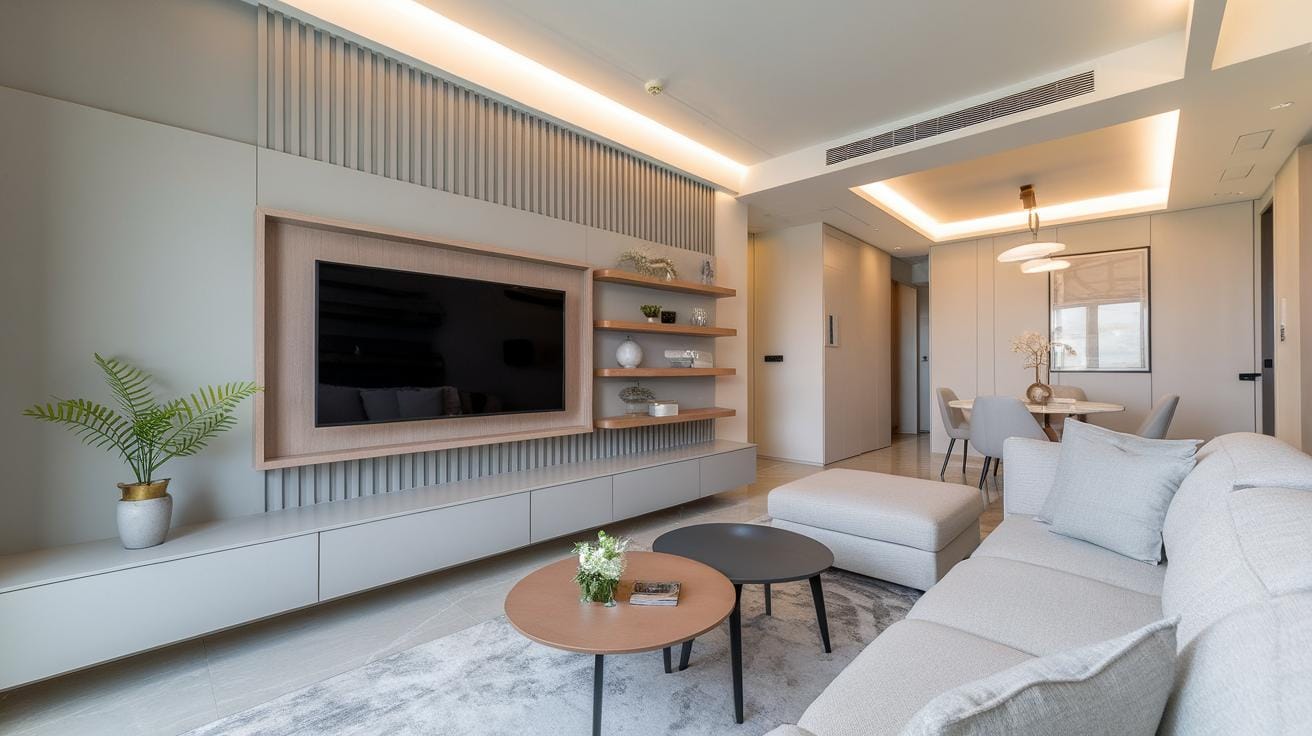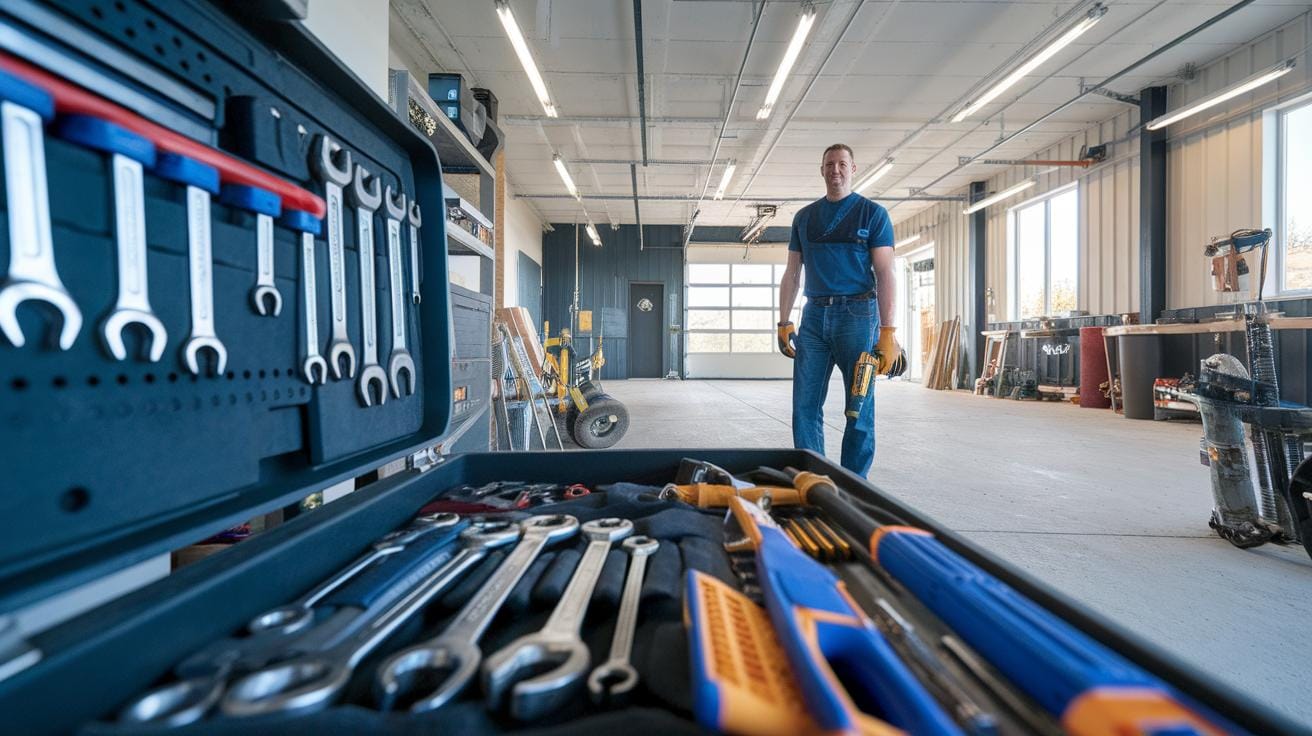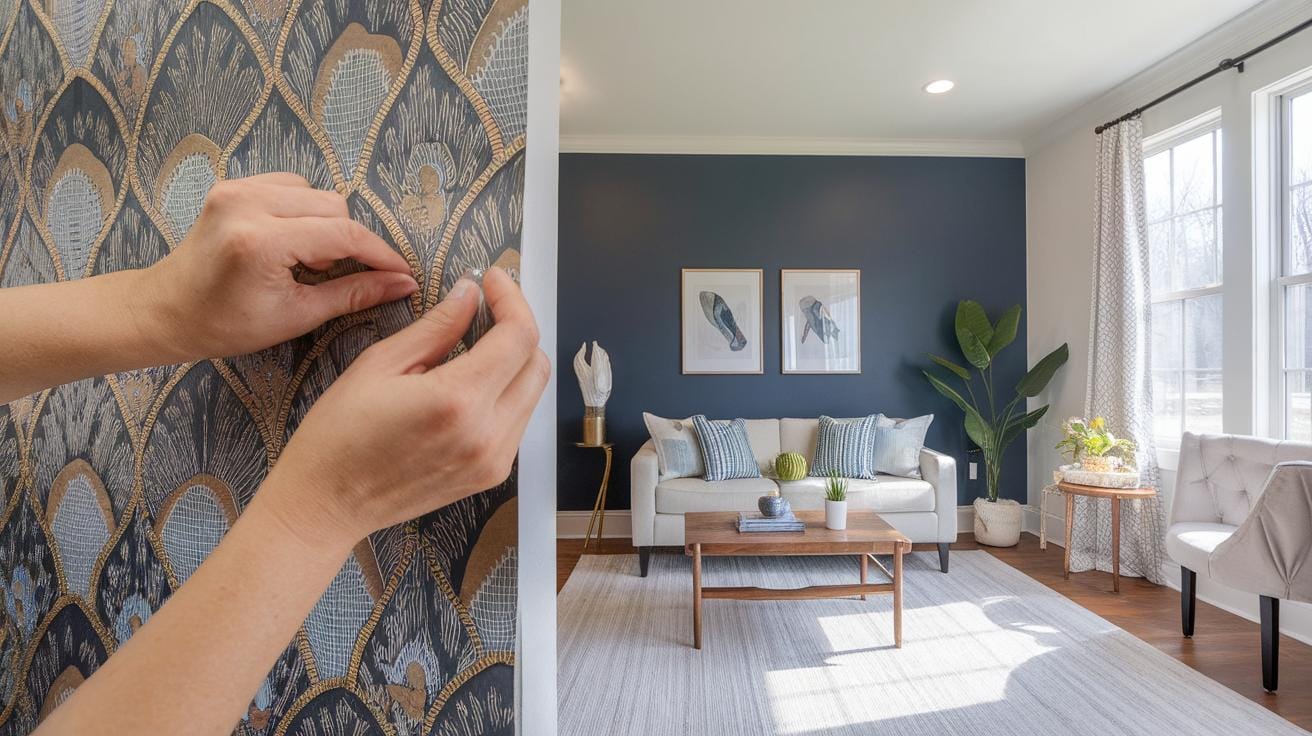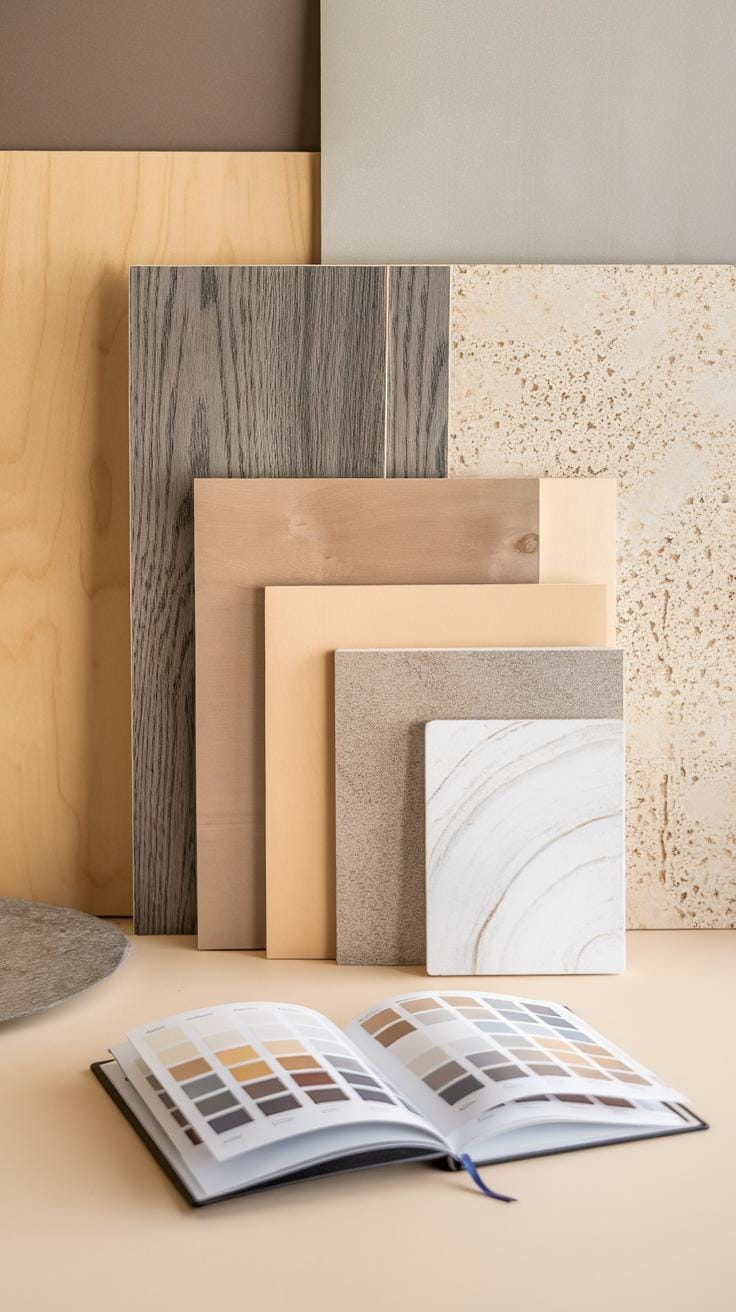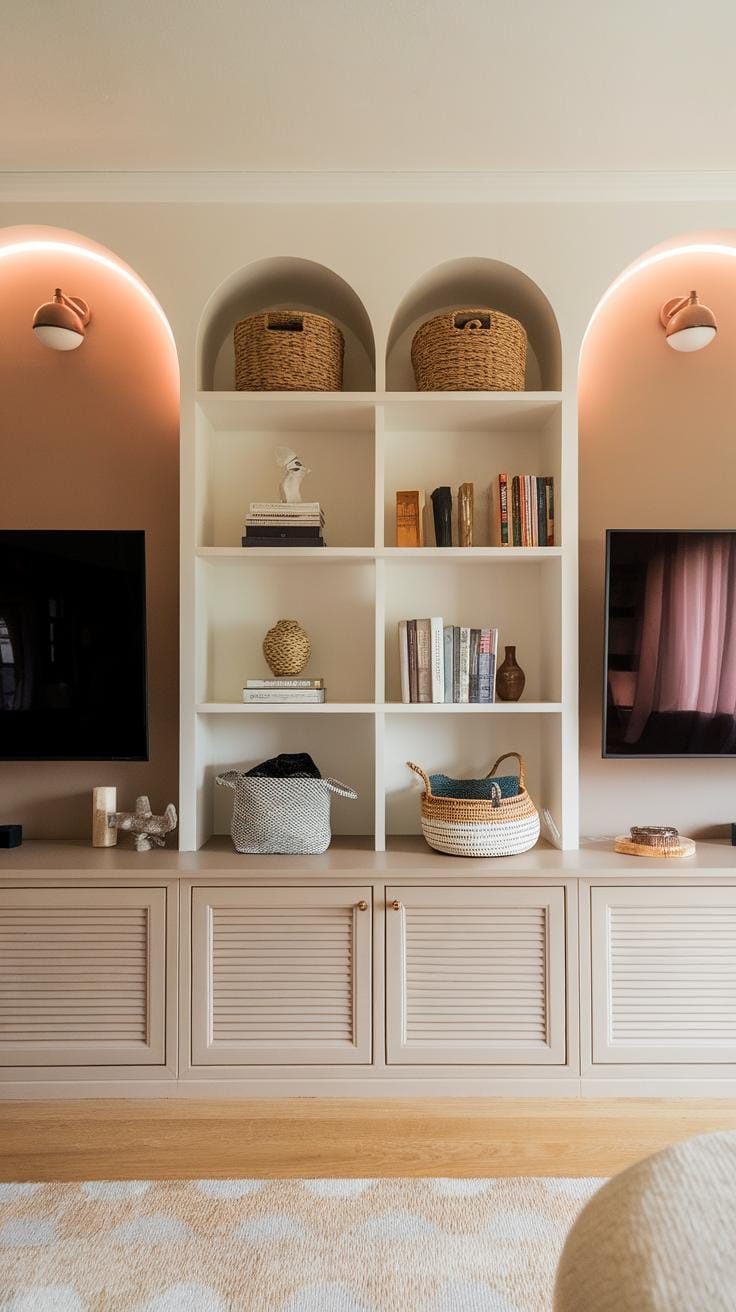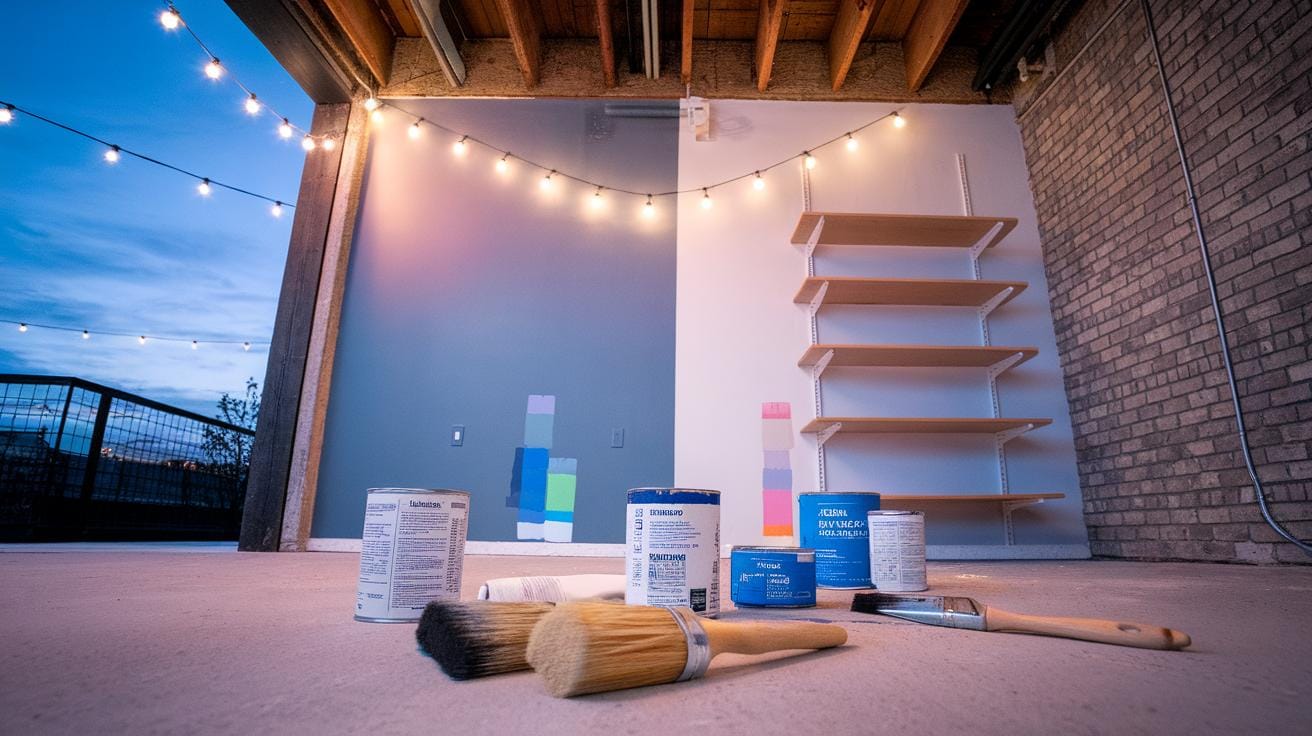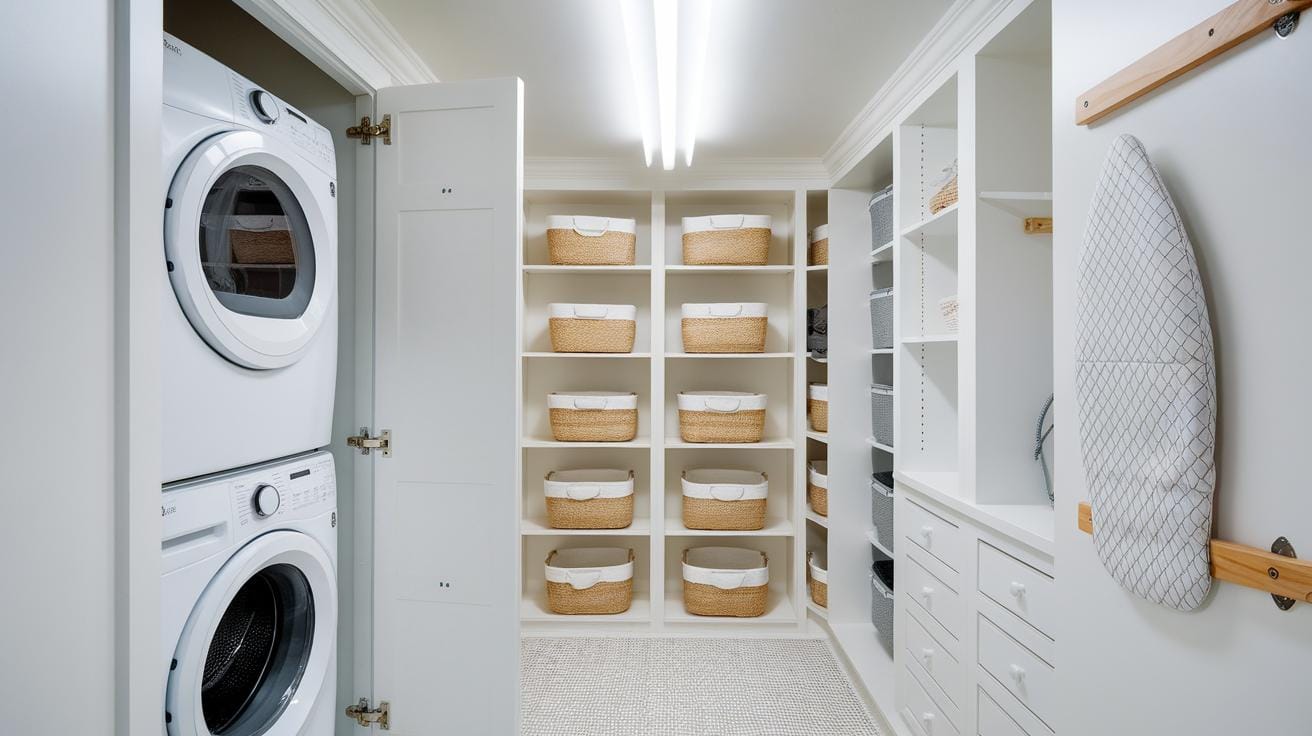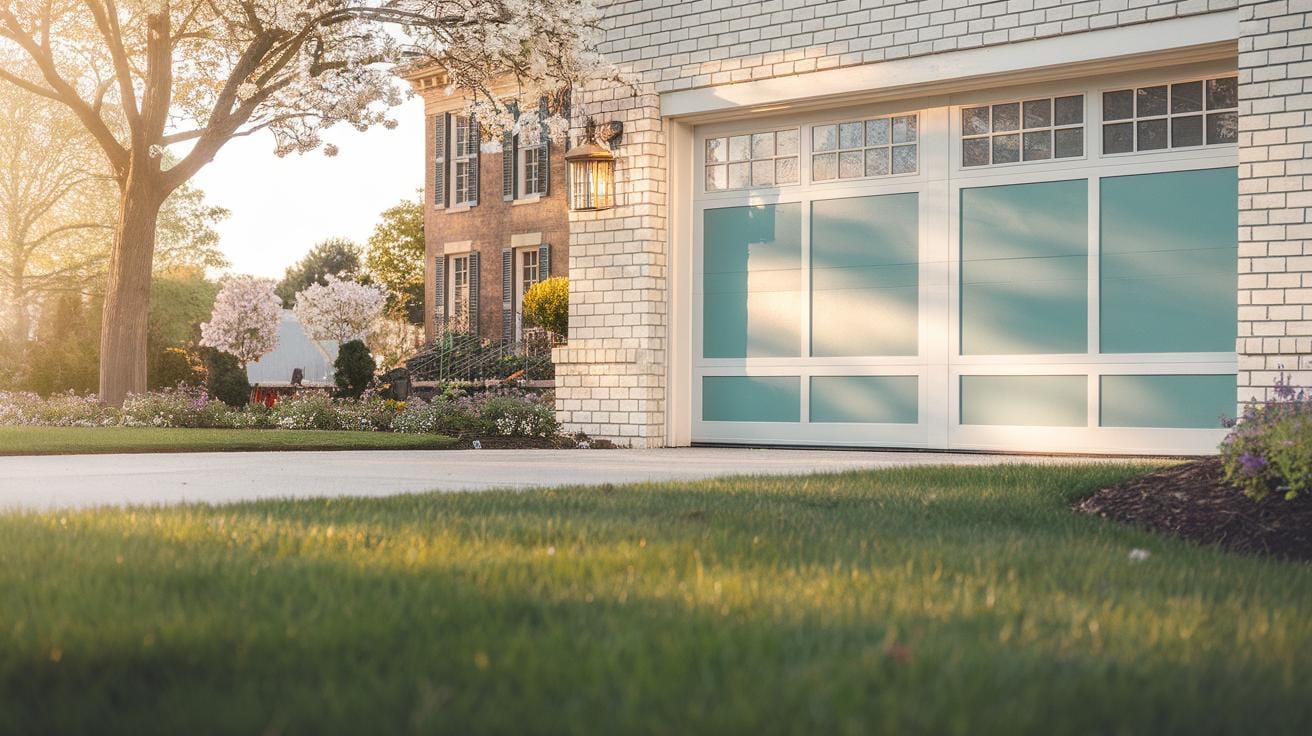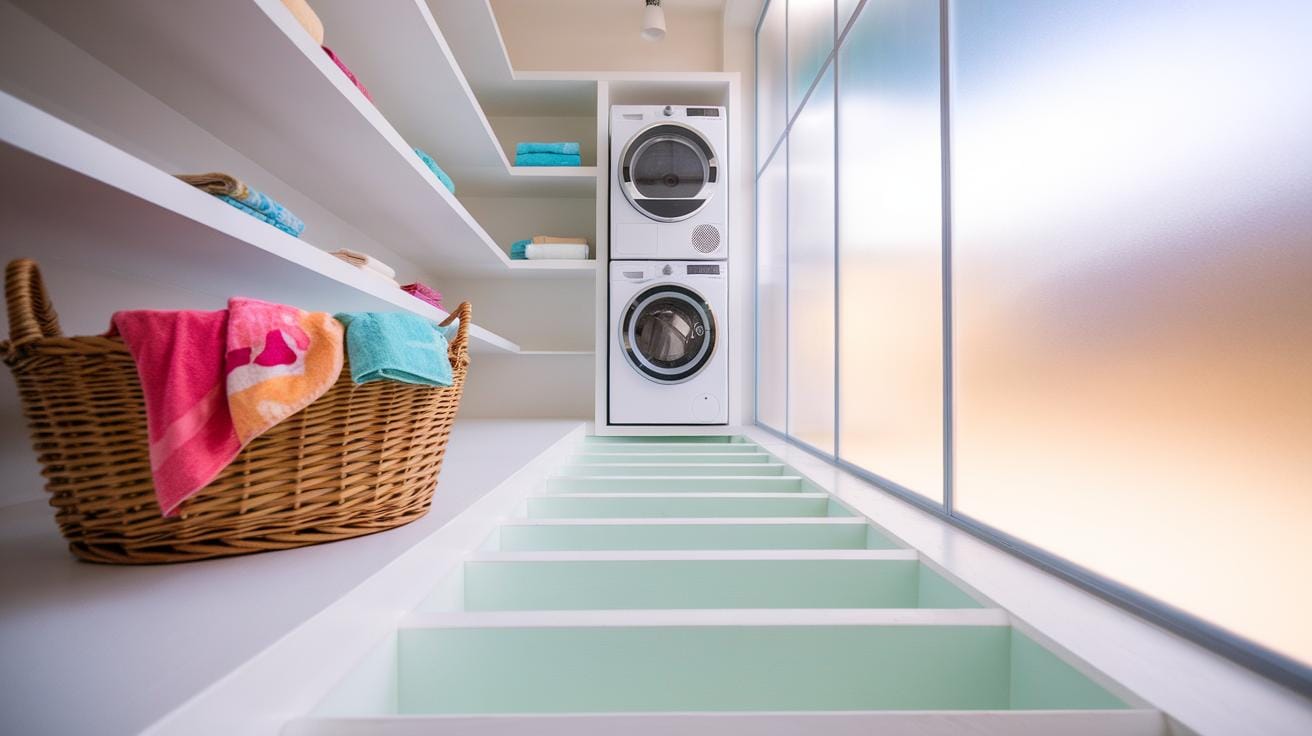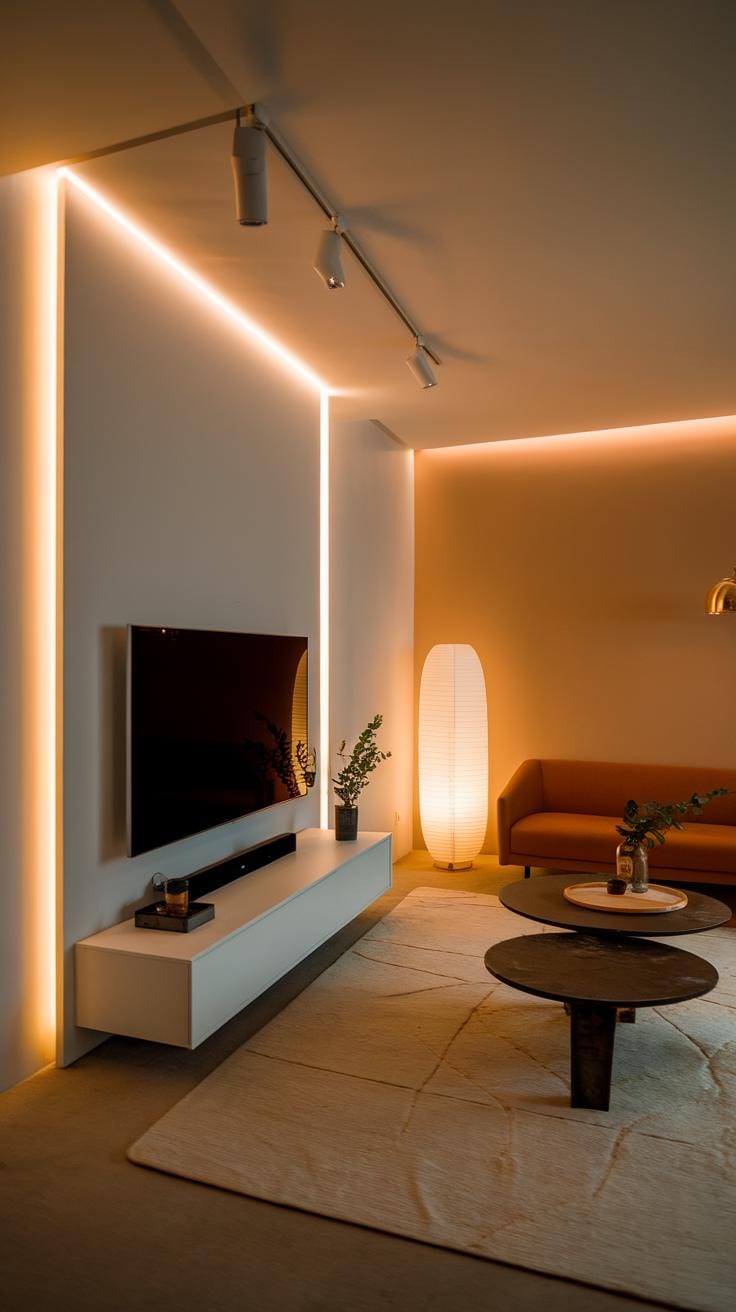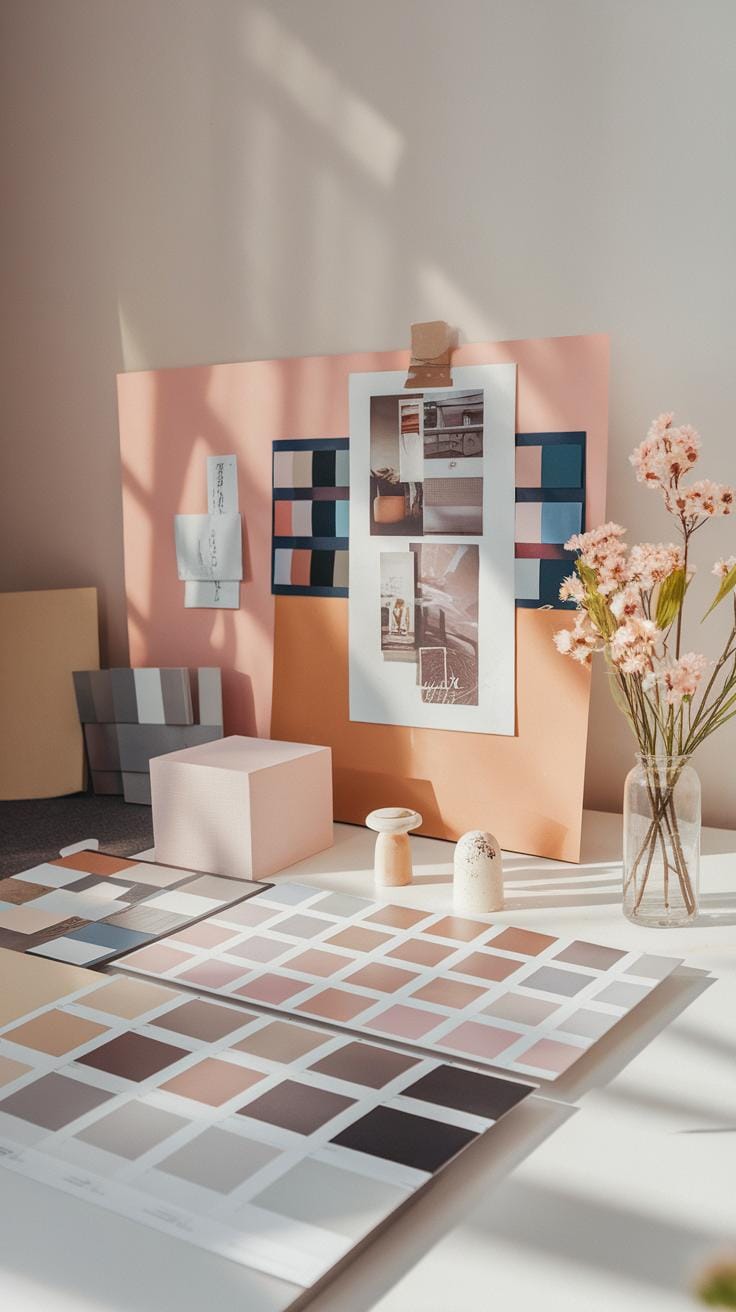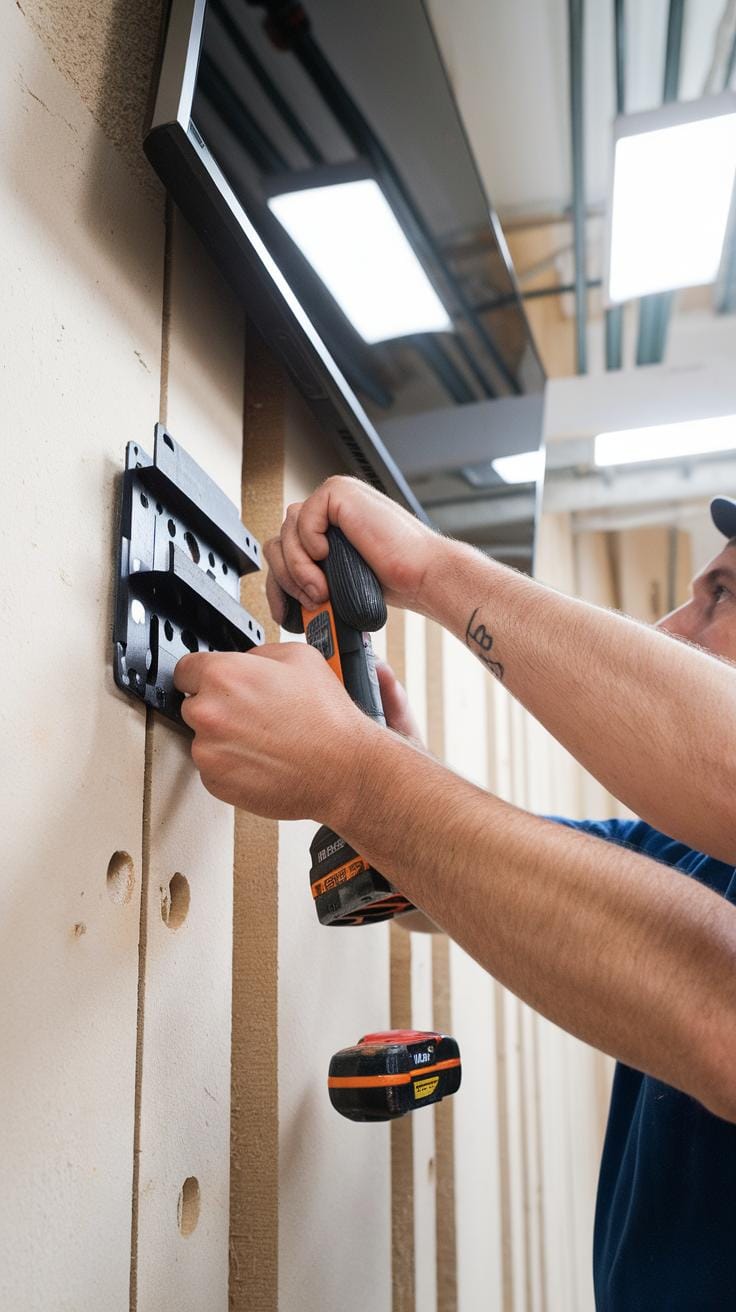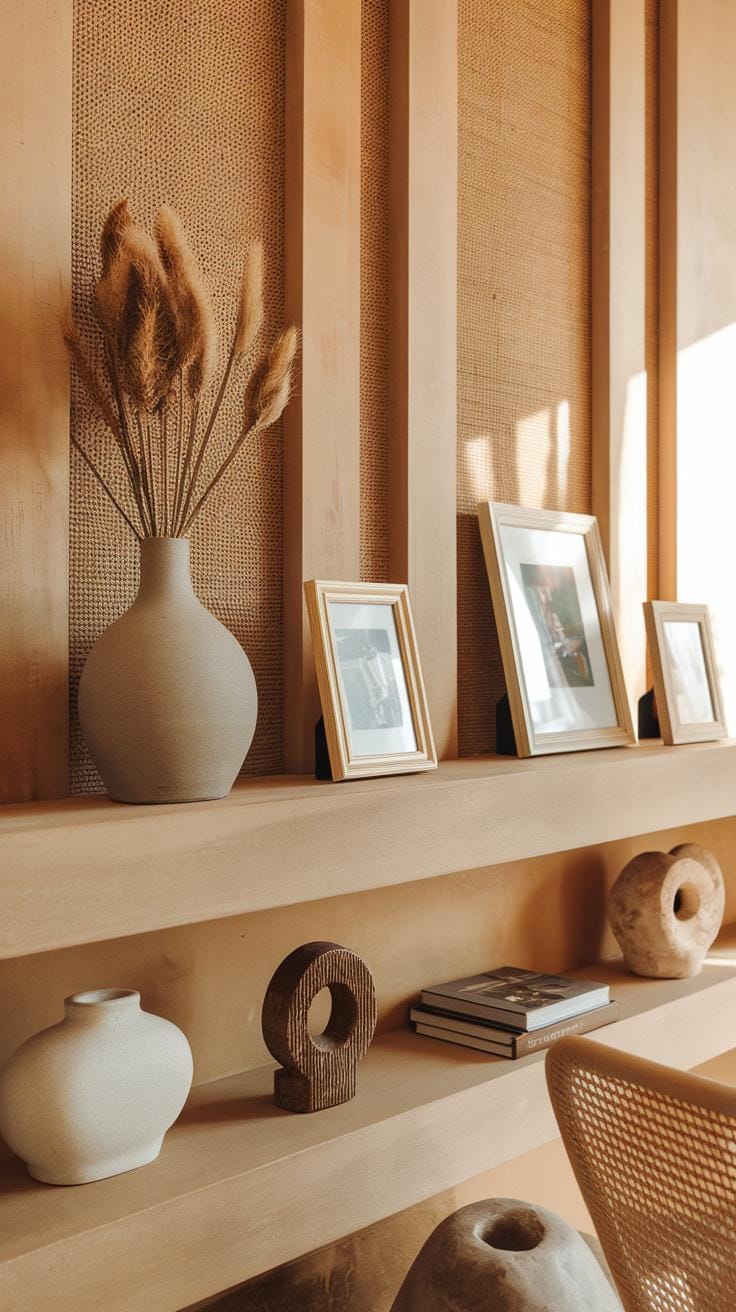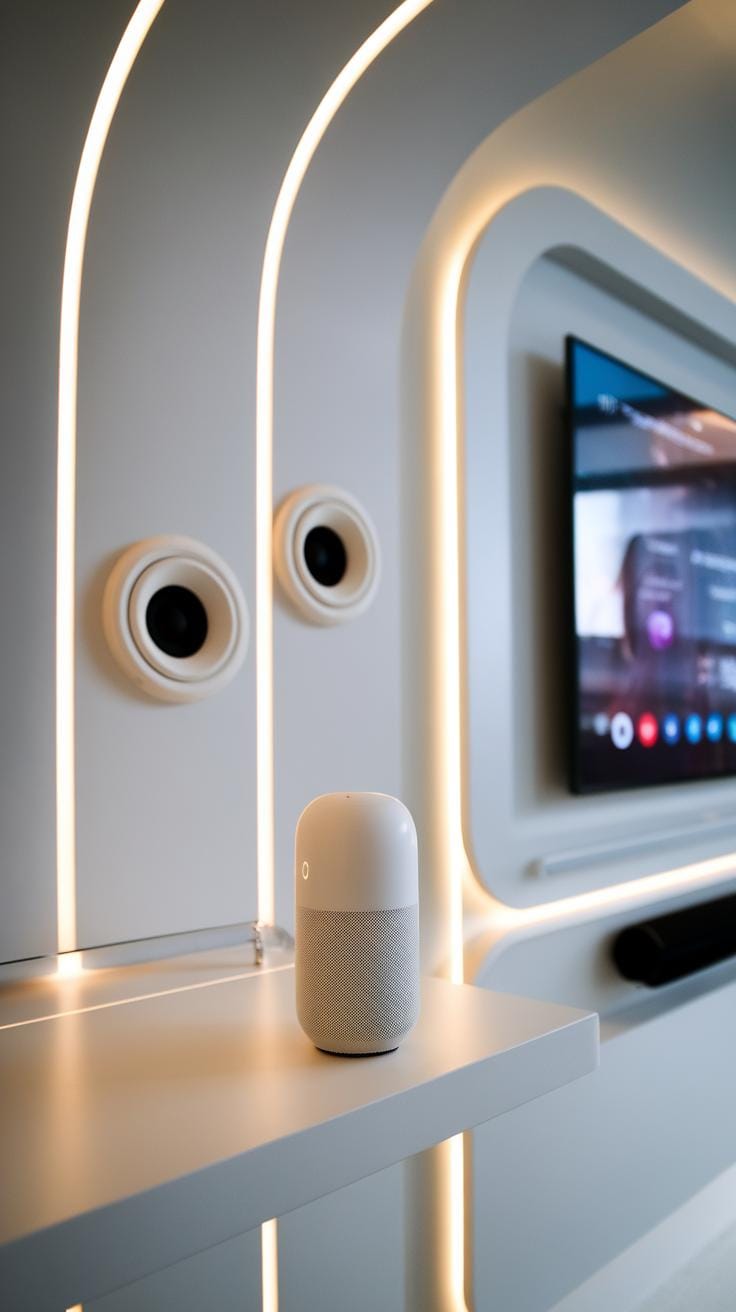Introduction
Your living room TV wall is more than just a place to hang your television. It shapes your room’s look and feel. This wall can be a main feature that reflects your style and supports your daily life. Standing out doesn’t require big changes. You can use simple ideas to make it nice and useful.
Think about what you want from your living room TV area. Do you need storage, a spot to display items, or just a space to watch TV? This article guides you through smart and stylish ideas. It helps you choose designs fitting your taste and home. Ready to transform your living room TV wall into a space that fits your life and style?
Choosing the Right TV Wall Placement
Picking the best spot for your living room TV wall shapes your entire viewing experience. Consider the size of your space first. A large, open room allows more flexibility, while a compact area requires careful planning to avoid crowding.
Visibility matters. Your TV should be clearly seen from the main seating area without turning or straining your neck. Imagine where you spend most of your time—this will help decide the ideal location.
Comfort affects how long you can enjoy your shows without fatigue. If the TV is too high or too low, it causes discomfort. Position it at eye level when seated. You might want to test a few spots by sitting down and looking around.
Lighting plays a big role, so avoid placing your TV opposite windows or bright lamps. Think through how natural light moves during the day and how artificial lights will behave in the evenings. This planning stops glare and preserves screen clarity.
Assessing Room Layout and Viewing Angles
Look at your furniture arrangement closely. Is your couch directly facing one wall, or do your chairs form a circle? Identify where people sit most often when watching TV. This spot should guide your TV wall choice.
Check the shape of your room. A rectangular room might naturally suggest one long wall, but don’t forget about shorter walls that could offer better sightlines. Try placing a chair where you plan to sit and see how the view changes from different angles.
Ideal viewing angles keep your neck and eyes in a relaxed position. Avoid corners that force viewers to turn sharply. Adjusting the angle of the TV mount can help but choose a location that minimizes this need.
Ask yourself: Does everyone have a clear view? If a member of your household sits off to the side, will they still see the screen comfortably? These details matter for shared spaces.
Considering Natural and Artificial Lighting
Light sources can brighten a room but often interfere with screen visibility. Sunlight streaming through windows creates glare, washing out the TV picture. Try to position your TV wall where direct light won’t hit the screen.
Think about the timing of sunlight in your room. Does a window face west and flood the area with afternoon light? If so, placing the TV wall on an adjacent or opposite wall can reduce reflection trouble.
Artificial lights like ceiling fixtures or lamps can cast unwanted glare too. Choose dimmable lights or indirect lighting to control brightness levels around your TV wall. Avoid placing lamps right behind or across from your screen.
Consider using curtains or blinds to manage natural light when needed. They give you control during the day, so your TV remains easy to watch, no matter the hour.
Selecting Suitable Materials for the TV Wall
Your TV wall needs materials that balance style, durability, and ease of care. Popular choices include wood, stone, and painted drywall. Each offers different benefits depending on your living room’s needs. Wood adds a natural look and feels warm to the touch. Stone provides toughness and can create a striking contrast with your TV screen. Painted drywall keeps the look clean and simple and offers flexibility to change colors whenever you want.
Durability matters, especially if your living room sees lots of activity. Stone and wood tend to resist scratches better than drywall. On the other hand, drywall allows you to quickly refresh the wall with new paint without a major overhaul. Think about how much time you can spend cleaning or fixing minor damage. How often do you want to update the look? These questions help narrow down the best material for your TV wall.
Focus on combining the material with your overall interior style. A rustic living room might benefit from raw wood, while a modern space suits polished stone or smooth painted walls. Whatever you choose, pick something that feels easy to maintain and fits the lifestyle in your home.
Advantages of Wood and Paneling
Wood panels bring texture and warmth to your TV wall that few materials match. Their natural grains add depth, making the wall more inviting. You can select from oak, walnut, or maple for strong, lasting beauty. Pine offers a softer look at a lower cost. Finishes also change how wood behaves and appears. Matte finishes hide scratches better, while glossy ones brighten the room.
Wood encourages a cozy atmosphere. Imagine watching your favorite show against a backdrop that feels both stylish and comforting. Vertical wood slats or wide planks work well to frame your TV without overwhelming the space. Easy installation and repair make wood a practical option too. If your living room often shifts style, wood panels let you stain or repaint to match new décor.
Using Tiles and Stone for a Unique Look
Tile and stone offer a different kind of impact. Their textured surfaces create depth that makes your TV wall stand out. You might choose natural stone like slate or marble for rugged durability and a classic look. Porcelain tiles can imitate stone at a lower price and come in many patterns and colors.
This choice works well when you want contrast between the TV and its background. Light-colored stone behind a dark TV brings clarity to the screen. Dark, polished tiles reflect light and add sophistication. Fit these materials carefully around your TV so cables and shelves don’t clash. Consider partial coverage, such as a stone border or tile backsplash that complements nearby cabinets.
Think about your room’s humidity and cleaning needs when selecting tiles or stone. Both materials clean easily with simple wiping. Would a rich stone wall inspire you to change your living room style or stay with a consistent theme? That decision shapes how bold your material choice should be.
Incorporating Storage for Organization
Organizing your living room TV wall helps keep the space tidy and functional. Adding shelves, cabinets, and drawers around the TV creates storage that fits your lifestyle. You can store remote controls, gaming consoles, and DVDs without cluttering your living area.
Think about how you use your TV area daily. Do you need quick access to devices or prefer hiding them away? Adding storage nearby makes your setup more efficient and keeps cords and clutter out of sight.
Including a mix of open and closed storage offers flexibility. Shelves allow you to display decorative items or frequently used media, while cabinets and drawers keep less attractive items hidden. What storage types suit your needs best to maintain a balanced and orderly living room?
Floating Shelves and Open Storage
Floating shelves create a light, modern look for your TV wall. You can place media accessories like game controllers, soundbars, or small decor pieces on them without overwhelming the space. Their open design keeps everything within reach and makes the room feel larger.
Try grouping shelves in different sizes or staggered patterns. This adds visual interest while providing practical storage. Use baskets or small boxes on these shelves to contain loose items like cables or remotes while keeping the minimalist feel.
Are you using your shelves to balance beauty and function? Choose items thoughtfully, so your shelves support a neat environment without sacrificing your personal style.
Closed Cabinets for Clutter Control
Closed cabinets provide a clean and simple way to hide wires, devices, and clutter on your TV wall. They prevent dust buildup and keep distractions away from your viewing area.
You can opt for wall-mounted cabinets or floor units to match your layout. Cabinets with doors or drawers let you store items like routers and DVDs quietly out of sight. These storage spaces help maintain smooth lines around the TV, making the wall appear less busy.
Consider cabinets with adjustable shelves for flexible storage, or built-in ventilation to protect electronics. What hidden items do you want to organize so your TV wall can look calm and uncluttered every day?
Smart Cable Management Techniques
Keeping your TV wall free of clutter improves both safety and style. Managing cables carefully stops wires from tangling or becoming a tripping hazard. You want your living room television area to look clean and organized without distracting cords everywhere. Which cable management method fits best with your room’s design?
Using concealed channels or trunking is a practical way to hide wiring. Running cables behind the wall creates a smooth, seamless look. This requires cutting into drywall to create a hidden path for wires. If that’s not an option, trunking that matches the wall color works well. It covers wires neatly and blends in, helping your TV wall feel less busy.
Wireless options can greatly reduce the number of cords you see. Wireless speakers, streaming devices, and HDMI transmitters simplify your setup. You cut down on plugs and tangled cables, making installation faster. Could fewer wires around your TV change how comfortable your living space feels? Consider combining wireless tech with minimal wiring for an effortlessly sleek display.
Using Concealed Channels and Trunking
Running cables inside the wall keeps everything tidy. Tools like in-wall power extension kits and cable raceways help with this. You drill small holes on the wall to feed cords through hidden channels. This method requires some work but results in a clean TV wall that shows no wires.
If wall recessing seems too complex, paintable trunking is a smart alternative. You attach slim plastic or metal strips along the cable path. Matching the trunking color to your wall ensures it doesn’t stand out. You can also choose trunking with removable covers for easy access to cables later.
This approach keeps cables organized and out of sight. It creates a neat visual line from your TV to your devices without damage to your walls. Would this solution fit your living room walls and lifestyle?
Wireless Solutions and Minimal Wiring
Wireless technology has improved significantly, making neat TV walls easier to achieve. Wireless HDMI transmitters send video signals without cables, while Bluetooth speakers connect without cords. Streaming sticks and smart TVs also cut down on device wiring.
Even so, some wires may remain necessary, like power cords. Using power strips with built-in surge protectors near your TV limits visible plugs. Keeping cables short and bundled with clips or ties reduces tangling and clutter.
Choosing devices with wireless capabilities first allows for a simpler setup. Ask yourself which accessories truly need a wired connection versus those you can make wireless. Minimizing cables helps create a TV wall that feels open and clean without extra effort.
Enhancing the TV Wall with Lighting
Lighting plays a key role in how your living room TV wall looks and feels. Using the right lighting techniques can create a cozy atmosphere and make your TV wall a stylish focal point. You can combine different types of lighting such as LED strips, spotlights, and ambient lights to add layers and depth. Have you noticed how a dimly lit room changes your experience of watching a movie or relaxing?
Adding LED strips behind your TV creates a soft glow that gently lights up the wall. This not only reduces eye strain when the room is dark but also highlights the TV without harsh brightness. You can adjust the colors and brightness of LED lights to match your mood or blend with your room’s décor. This approach offers comfort and style, keeping your living area inviting without overpowering the space.
Spotlights can serve a dual purpose by focusing light on decorative features around your TV and enhancing the overall design. Adjustable spotlights let you direct beams of light exactly where you want, such as on artwork, shelving, or textured wall finishes. They add layers of interest and make your TV wall feel more dynamic, breaking away from a flat, plain surface. What areas of your TV wall deserve more attention?
LED Backlighting and Accent Lights
Placing LED lights behind your TV helps reduce glare and creates a clearer image for your eyes. These lights produce a subtle glow around the screen that softens the harsh contrast of a bright TV in a dark room. This makes viewing more comfortable for longer periods. When you control the color and intensity, the backlighting complements your living room’s colors and changes with your mood.
You can install LED strips along the edges of the TV or on the back panel of your TV unit. Some LED systems include remote controls or smartphone apps, letting you shift tones from cool blue to warm amber easily. This flexibility allows you to personalize your space and create a calm or energetic ambiance, depending on the activity.
Adjustable Spotlights for Focus and Style
Spotlights provide a way to highlight objects around your TV wall, emphasizing design elements that often go unnoticed. Mounting adjustable spotlights above or beside your TV lets you shine light on framed photos, sculptures, or decorative shelves. By changing the angle or brightness, you control how much attention those features get.
Using spotlights brings contrast and shadows, adding depth to what could otherwise be a flat area. This technique can demonstrate your style by drawing eyes to your favorite décor. Have you considered switching some ceiling lights to adjustable spotlights for more control over your living room ambience? These also help balance the room’s lighting by preventing the TV from being the only light source.
Choosing a Color Scheme That Suits Your Style
When selecting a color scheme for your living room TV wall, think about how it fits with your room’s overall look and your personal taste. The right color can either help the TV blend in or make the wall stand out without overwhelming the space. Consider the furniture, lighting, and decor already in the room. Are your pieces mostly cool tones or warm tones? This will guide your paint choice or wall finish options.
Matte and eggshell finishes work well to limit glare from the TV screen, while subtle textures can add depth without distracting. If you want a simple look, stay within a related color family for the wall and surrounding decor. To draw attention to the TV area, choose colors that contrast with the rest of the room. Ask yourself: Do I want the TV to disappear or become the main focus? Your answer will shape the color selection.
Experiment with sample colors on a small section of the wall before committing. Observe how the colors look in both natural and artificial light throughout the day. This practical step helps avoid surprises and confirms the right match for your style and space.
Neutral and Monochrome Palettes
Neutral colors like beige, gray, or soft whites offer a calming backdrop for your TV wall. These tones help the TV blend seamlessly into the environment, reducing distractions during viewing. When you use a monochrome palette, you create subtle color differences in paint, furniture, and accessories, tying the room together quietly and neatly.
Neutrals work well if your living room has bright or patterned furniture. They balance the space without clashing. For example, a warm gray wall behind a black TV can soften the screen’s edge and ease eye strain. If you prefer minimalism, this option simplifies decorating and offers flexibility to update furniture or accent pieces later.
Consider how a neutral palette fits your lifestyle. Do you want a peaceful retreat where the TV is part of the room but not the center? Or do you need a background that adjusts with changing trends and moods? Neutral walls give you a timeless foundation that adapts as you refresh your space.
Bold Colors and Accent Walls
Choosing a bold color or textured finish can transform your TV wall into the room’s statement piece. Deep blues, forest greens, or rich charcoal create a dramatic frame around the screen. This choice highlights the entertainment zone and adds personality to your living space.
A painted accent wall grabs attention and sets a tone. Pair it with simple, streamlined furniture to keep the focus where it belongs. Textured finishes — like wood panels, brick, or plaster — add visual interest and reduce echo sound, improving your viewing experience. For instance, a navy blue wall with matte wood slats behind the TV creates a stylish yet functional setup.
Before committing, ask: Will this bold wall style remain appealing as tastes change? Are you ready to coordinate other elements, like shelving or lighting, to complement it? Bold TV walls make a confident design statement and can define your living room’s character.
Mounting the TV Safely and Effectively
Selecting the Right Wall Mount Bracket
Choosing the right wall mount for your TV depends on how you plan to use and arrange your living room. Fixed mounts keep your TV flat against the wall. They work well if you sit in one spot and want a clean look. Tilting mounts allow you to angle the TV up or down. This is helpful to avoid glare from windows or lights. If you move around the room or want different viewing angles, a full-motion mount lets you swivel and extend the TV. These mounts give you the most flexibility but take more space. Consider your room layout and seating before picking a mount. For example, if your couch is centered and you rarely move, a fixed mount fits well. If you want the TV to stay visible from dining or kitchen areas, try a full-motion bracket.
Proper Height and Viewing Distance
The height at which you mount your TV affects your comfort. Ideally, the center of the screen should be at eye level when you sit down. This reduces neck strain and helps you watch for longer. Measure the height of your sofa’s seat and add about 15 inches to estimate your eye height. Avoid mounting the TV too high, which forces you to tilt your head upward. Distance from your seating matters too. For most screens, sit about 1.5 to 2.5 times the diagonal screen size away. For example, if your TV is 50 inches, your ideal seating distance is between 75 and 125 inches. Too close can strain your eyes; too far reduces detail quality. Could adjusting the height or distance change how you experience movies or shows?
Adding Decorative Elements to Personalize the Space
How can you make your TV wall feel more personal without creating clutter? Balancing decoration and function is key. Placing thoughtful items around your TV can create a room that reflects who you are while keeping the focus on your entertainment.
Start by choosing pieces that have meaning to you, whether that’s art, family photos, or objects that inspire. Limiting the number of items prevents the space from feeling crowded. Position decorations so they frame the TV rather than compete with it, giving the whole wall a polished look.
Adding layers with texture and color can make the area inviting. Think about how each piece connects with your room’s overall style. The goal is to create a harmonious look where each element supports the others, making your TV wall both practical and visually engaging.
Framed Prints and Artworks
Artwork and framed photos give your TV wall a purposeful design. Choose prints that match your room’s color scheme and style. For example, sleek black frames work well in modern settings, while wood frames fit cozier or rustic rooms better.
Arrange frames in a simple grid or an organic cluster around the TV to draw the eye. You might include prints that share colors with your furniture or walls for a cohesive feel. Art with subtle themes related to your interests adds a personal touch without overpowering the space.
Whenever selecting pieces, consider size and spacing carefully. Smaller prints should be grouped tightly, while larger ones need breathing room. This approach keeps the wall balanced and lets your TV remain the focal point.
Incorporating Greenery and Textiles
Plants and textiles soften the hardness of a TV wall. Adding a few potted plants on nearby shelves, or placing a tall plant beside the TV, introduces fresh color and life. Choose plants that fit your room’s lighting conditions and require low maintenance, like snake plants or pothos, to keep things simple.
Textiles play a similar role. Positioning a rug or curtain near the TV wall can absorb sound and ease glare. Textiles also bring warmth and comfort, making your living room inviting for family and guests.
Think about combining natural elements with your decor style. Linen curtains suit a relaxed look, while velvet cushions or rugs add a touch of luxury. These layers help create a balanced space that invites you to relax and enjoy your entertainment setup.
Integrating Technology for a Modern Experience
Your living room TV wall can do more than just display your favorite shows. Adding smart home devices and advanced sound systems creates an entertainment setup that fits your lifestyle and keeps you connected. Think about using smart lighting that adjusts to your screen’s brightness for a comfortable viewing ambiance.
Consider integrating a universal remote or a smart hub to control all your devices from one place. This makes managing your TV, speakers, gaming consoles, and even smart blinds simple and seamless. Have you ever wished you could start a movie, dim the lights, and adjust the temperature without leaving your sofa? Smart technology can make that happen.
Choosing wireless options reduces clutter around your TV wall and keeps cables out of sight. Devices that work together enhance the overall experience and save you time. How could these technologies change the way you enjoy your living space every day?
Smart TVs and Voice Control
Smart TVs bring more than just streaming services to your living room. They connect to the internet, letting you access apps, browse content, and even mirror your phone’s screen directly. This lets you switch from watching a show to browsing social media without picking up another device.
Using a voice assistant with your smart TV adds convenience. You can turn the TV on or off, change channels, adjust volume, and search for shows with simple voice commands. Imagine asking your TV to play your favorite playlist or start a new movie without touching a remote. This hands-free control is helpful when your hands are full or when you want to relax.
Voice control also works with other smart devices. Linking your TV with your smart lights or thermostat creates a connected environment that reacts to your commands. Would this level of control make your TV wall more enjoyable and easier to use?
Soundbars and Surround Systems
Improving your living room’s sound quality transforms how you enjoy movies, music, and games. Soundbars offer a compact solution that sits right below your TV or mounts on the wall. These devices deliver clear audio without taking up much space or needing complicated wiring.
For a fuller sound experience, you can add surround sound systems. Small wireless speakers can be placed around the room to fill the space with rich, immersive sound. These speakers often blend into your décor and connect easily through Bluetooth or Wi-Fi.
Choosing the right sound system depends on your room size and how you watch TV. Do you prefer a simple setup or a more cinematic feel? Integrating quality audio completes your TV wall and boosts your home entertainment significantly.
Maintaining and Updating Your TV Wall Setup
Keeping your living room TV wall clean and organized is key to maintaining a stylish and functional space. Dust often settles on screens and surfaces, which can reduce picture clarity and affect electronics. Regular dusting with a soft cloth helps protect your TV and any shelves or decor around it. Checking cable connections now and then prevents loose wires that might cause disruption or damage.
Your TV screen also needs gentle cleaning. Use a microfiber cloth lightly dampened with water or a screen-safe cleaner. Avoid harsh chemicals that can harm the screen’s coating. Taking a few minutes weekly for these tasks extends your setup’s life and keeps it looking neat.
Routine Cleaning and Cable Checks
Regular upkeep starts with dusting the entire TV wall, including speakers, frames, and shelves. Small dust particles can build up quickly, affecting appearance and performance. Make a habit of wiping cables and connectors as you dust to prevent buildup around them.
Check all cable connections every two weeks. Loose or damaged cables reduce picture and sound quality and could cause outages. Confirm that power cords and HDMI cables plug in firmly. If you spot wear or fraying, replace cables immediately to avoid problems.
Don’t forget the screen itself. Fingerprints, smudges, and dust reduce viewing quality. Use a cloth designed for electronics and avoid spraying cleaner directly on the screen. These simple habits ensure your TV wall looks good and works well for years.
Refreshing the Look with Simple Changes
Updating your TV wall does not need a full remodel. Swapping out decor items like picture frames, plants, or sculptures can change the room’s tone quickly. For example, switching to neutral colored accents for a calmer feel or bold hues for energy updates the atmosphere at low cost.
Try repainting the wall behind your TV to create contrast or tie into seasonal trends. Even a single fresh coat can redefine your space and create a modern backdrop for electronics. If painting sounds like too much, consider removable wallpaper or decals for easy change.
Adding or adjusting lighting around the TV wall also reworks the look. Use LED strips behind the TV for subtle glow or install plug-in wall lamps to focus attention on art or shelving. Experiment with brightness and color temperature to find a vibe that suits your style without complicated installation.
Conclusions
Choosing how to arrange your living room TV wall shapes your whole room. The right design makes your TV a part of your space, not just a box on the wall. Using shelves, cabinets, or colors links your TV wall to your style. These details also make your daily life easier and more fun.
Keep your goals in mind as you pick TV wall ideas. Focus on what suits your needs and style. Simple updates can change your room and how you feel there. Start with one idea and see the difference it makes. Your living room TV wall can become a spot that fits your home perfectly.

